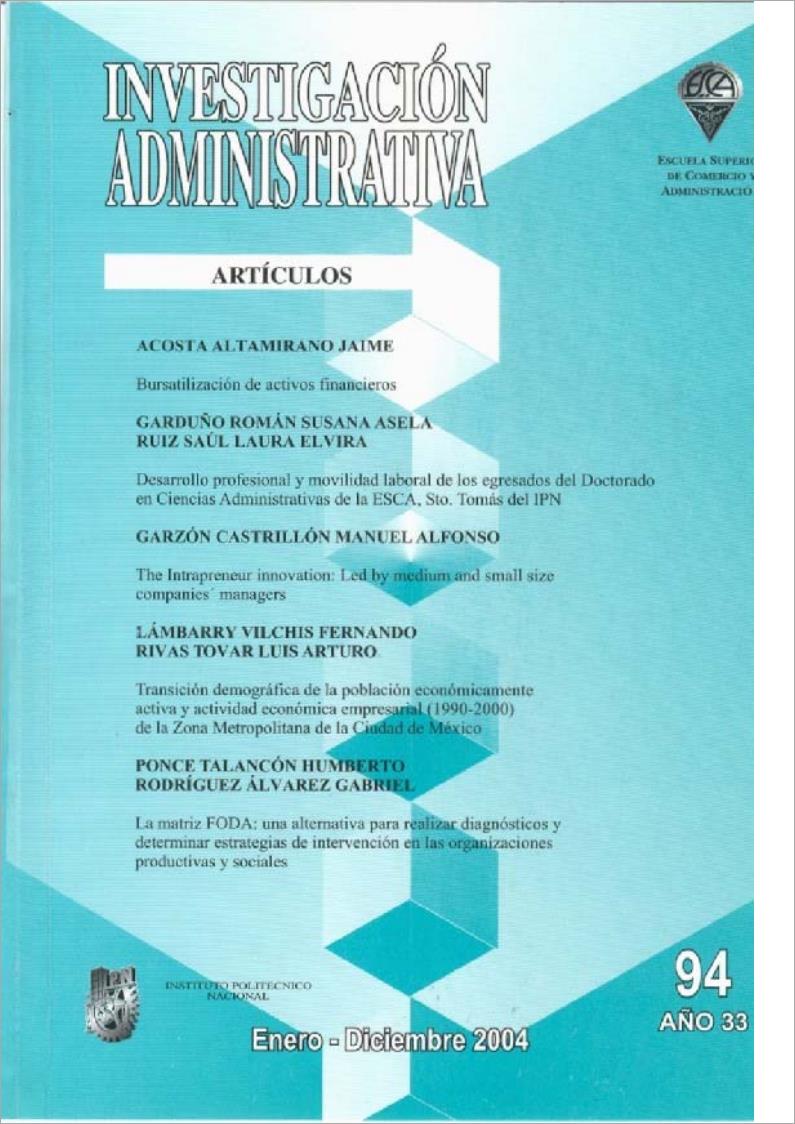Demographic transition of the economically active population and business economic activity (1990-2000) in the metropolitan area of Mexico City
Main Article Content
Abstract
Demographic variables are key in determining a country's social reality, as they are closely associated with poverty, inequality, social exclusion, and environmental factors.
In this sense, understanding population dynamics is especially relevant.
As a result of advances in healthcare and nutrition, demographic transitions have begun in all countries around the world, with increasing growth and a tendency toward seasonality.
Article Details

This work is licensed under a Creative Commons Attribution-NonCommercial 4.0 International License.
References
Figoli M. y Rodríguez L. (2001). El camino hacia la estabilización demográfica y el proceso de envejecimiento en América Latina: una ilustración a partir de algunos países seleccionados. Univ. Federal de minas Gerais Brasil. XIV conferencia internacional de población Salvador de Bahía.
Giner, Salvador (2001). Diccionario de Sociología, España: Alianza.
Lámbarry Fernando (2005). Transición demográfica de la Población Económicamente Activa (1950-2000) y Actividad Económica Empresarial (1994- 1999) de la Zona Metropolitana de la Ciudad de México (Tesis de Maestría, Instituto Politécnico Nacional ESCA Santo Tomás).
Leesthaehe R. (1995). The second demographic transition in western countries IUSIP Clarean pressOxford.
Maciver R., Page C. (1972). Sociología, Madrid: Tecnos.
Molina Mario, Molina Luisa (2002) Air Qualityin The México Megacity. USA: Kluwer Academic Publishers.
Morice A, (1974), Diccionario de Estadística, España: Continental S.A.
Paredes M. Trayectorias reproductivas, relaciones de genero y dinámicas familiares en Uruguay (Tesis doctoral Universidad autónoma de Barcelona).
VandeKaa.V. (1986). Europe second demographic transition. Population bulletin vol. 42 pag. 1.

